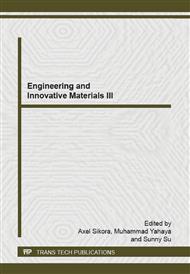p.138
p.145
p.149
p.154
p.159
p.165
p.175
p.180
p.184
Solidification Behaviour of a H21 Tool Steel
Abstract:
Solidification behaviour of a H21 tool steel has been studied. The aim of this work is to give better understanding of the as cast microstructure of the steel. The investigated H21 tool steel was made using induction vacuum furnace with air cooling. The microstructure observation was carried out using optical and electron microscopy. X ray diffraction and nanohardness were also used for phase and carbide identification. The results show that the as cast microstructure consisted of ferrite and coarse primary M6C carbide that is rich in tungsten. The nanohardness of ferrite was 5.1 ± 0.3 GPa and there was inhomogeneity in as cast microstructure, which is indicated by the nanohardness values from bulk grain to grain boundary precipitates varied between 4.8 to 8.9 GPa. Comparison between prediction and experimental results shows that the calculated phase diagram was not in agreement with the solidification microstructure of the H21 tool steel.
Info:
Periodical:
Pages:
159-164
Citation:
Online since:
October 2014
Keywords:
Price:
Сopyright:
© 2014 Trans Tech Publications Ltd. All Rights Reserved
Share:
Citation:


